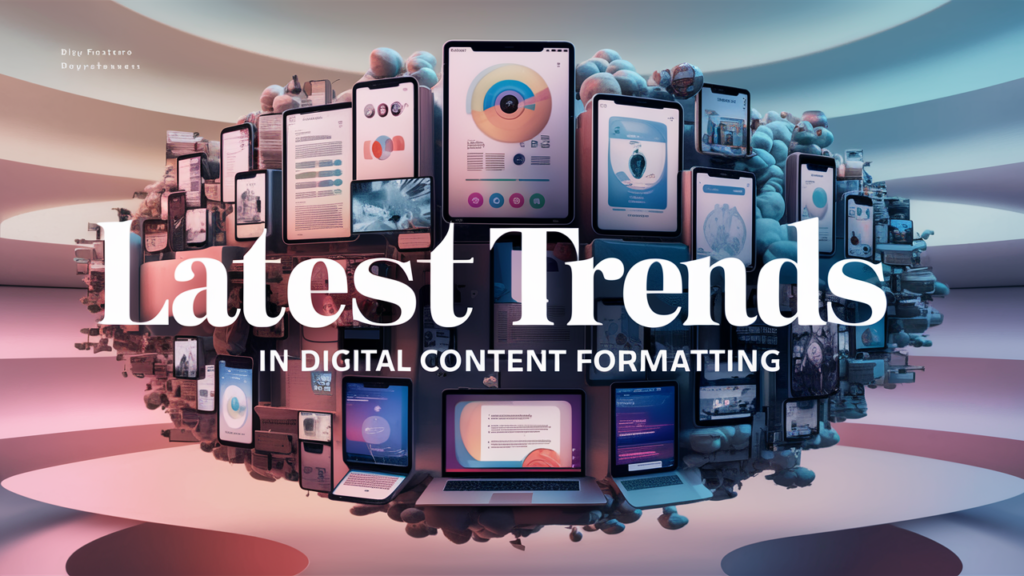In today’s digital landscape, content formatting isn’t just about making text look pretty – it’s about creating engaging, accessible, and effective communication that resonates with both human readers and search engines. As we navigate through 2024, several key trends are shaping how we format and present digital content.
1. Enhanced Readability for Mobile Users
With over 60% of web traffic coming from mobile devices, optimizing content for mobile readability has become crucial. Modern content formatting focuses on:
- Shorter paragraphs
- Strategic use of white space
- Scannable sections
- Optimized font sizes
To ensure your content meets modern readability standards, using a Readability Score Checker can provide valuable insights into how accessible your content is across different devices and platforms.
2. Voice-Optimized Content Formatting
The rise of voice search and audio content consumption has introduced new formatting considerations. Content creators are now formatting text to be both readable and “speakable.” This trend has led to:
- Conversational tone
- Natural language patterns
- Clear pronunciation considerations
- Audio-friendly formatting
Try our Text to Speech Converter to ensure your content sounds natural when read aloud, perfect for creating accessible content or testing voice optimization.
3. Dynamic Text Formatting
Modern content isn’t static – it adapts to different contexts and platforms. Key aspects include:
- Responsive formatting
- Platform-specific optimization
- Dynamic text sizing
- Adaptive layouts
Our Online Text Formatter helps you prepare content for various platforms while maintaining consistency and professionalism.
4. AI-Driven Content Structure
Artificial Intelligence is revolutionizing how we approach content formatting:
- Smart paragraph separation
- Automated readability optimization
- Context-aware formatting
- SEO-friendly structure
To enhance your content’s structure, combine AI insights with tools like our Words Counter to optimize length and density for different platforms and purposes.
5. Accessibility-First Formatting
Inclusive design is no longer optional. Modern content formatting prioritizes accessibility through:
- Screen reader compatibility
- Clear hierarchy
- Consistent formatting
- Alternative text options
Our Case Converter helps maintain consistent capitalization, which is crucial for accessibility and professional presentation.
6. Creative Content Generation
With content saturation at an all-time high, unique and creative formatting approaches help content stand out:
- Mixed media integration
- Interactive elements
- Creative typography
- Unique structural patterns
Spark creativity in your content using our Random Word Generator to break through writer’s block and generate unique ideas.
7. SEO-Optimized Formatting
Search engines are increasingly sophisticated in how they evaluate content structure:
- Strategic header usage
- Optimal content length
- Featured snippet optimization
- Rich result formatting
Using our Character Counter helps ensure your meta descriptions and titles are optimized for search engine display.
Best Practices for Modern Content Formatting
1. Maintain Consistency
- Use style guides
- Implement consistent spacing
- Maintain uniform formatting across platforms
- Regular format auditing
2. Prioritize User Experience
- Clear navigation
- Logical flow
- Intuitive structure
- Mobile-first approach
3. Optimize for Multiple Channels
- Cross-platform compatibility
- Responsive design principles
- Channel-specific formatting
- Unified brand experience
4. Monitor and Adapt
- Track engagement metrics
- Analyze user behavior
- A/B test formatting options
- Implement feedback
Implementation Strategy
- Audit Current Content
- Assess existing formatting
- Identify improvement areas
- Document formatting guidelines
- Plan updates
- Tool Integration
- Implement formatting tools
- Train team members
- Establish workflows
- Monitor effectiveness
- Regular Updates
- Stay current with trends
- Update formatting guidelines
- Refresh older content
- Maintain consistency
Conclusion
Digital content formatting continues to evolve with user preferences, technological capabilities, and platform requirements. By staying ahead of these trends and utilizing the right tools, content creators can ensure their material remains engaging, accessible, and effective.
Remember to regularly check your content’s formatting using our suite of tools:
- Readability Score Checker
- Text to Speech Converter
- Online Text Formatter
- Words Counter
- Case Converter
- Random Word Generator
- Character Counter
Stay ahead of the curve by regularly updating your content formatting strategies to match current trends while maintaining focus on user experience and accessibility.






